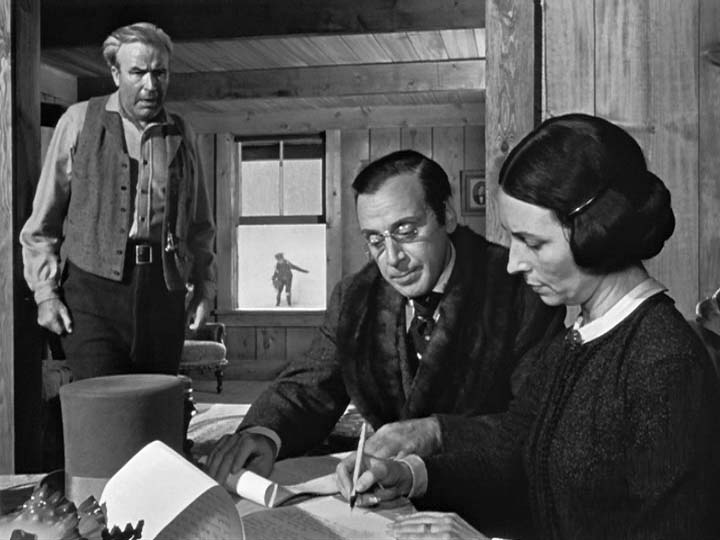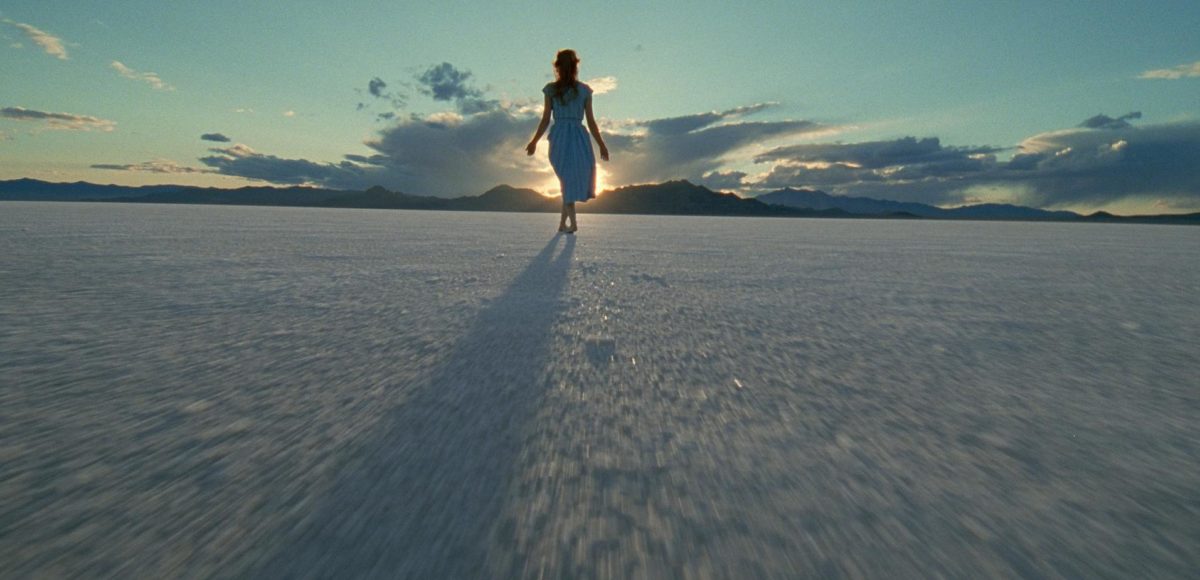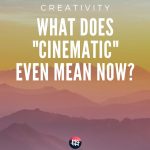What Does “Cinematic” Even Mean Now?
The meaning of words change over time. Gay used to mean happy, a clue was a ball of yarn, eerie was something you felt (like dizzy, or sad). The word “film” comes from the Old English word for membrane “filmen”. It also means “a story or event recorded by a camera as a set of moving images and shown in a cinema or on television“.
Which is a fun and exciting activity. But if you really want to get your film noticed, you need to blow folks away with your film’s cinematic quality. Since the digital revolution, a new army of filmmakers has been born. Many of them hungry to make their footage not just interesting or entertaining, but Cinematic (with a capital C).
Cinematic YouTube Videos
To fill this need, there are now unending YouTube tutorials instructing you how to achieve such a look. This one claims to be able to tell you how in 90 seconds.
But does the result really look cinematic? To me it’s reminiscent of a 1980s TV ad. And from the billowing smoke, my guess is the subject is fire safety. Selling smoke alarms perhaps? Featuring an aspiring boxer so ambitious he continues to train, even while his apartment block is burning to the ground around him…
The video’s first instruction is to use a stabilizer. Because cinema, it presumably claims, is exclusively about smooth shots. That counts out films such as Hurt Locker, which won 7 Oscars (including a nomination for Best Cinematography), but was filmed entirely with handheld (ie: shaky) cameras.
But according to this tutorial (which has 1.3 million views and 33,000 likes), a nomination for an Academy Award for Cinematography is less of an indication of a film’s cinematic quality than a smooth truck shot.
Cinematic Log Profile?
The second instruction is to record flat, and then play with the colours in Adobe Premiere (or other software). Well, of course having a well-thought out colour pallet is an advantage to getting a positive reaction from your audience. But does it make your film cinematic?
Another trait, commonly believed to be an essential requirement of cinematic footage is a shallow depth of field (where the background is out of focus). This has become known by some as the Bokeh Effect. Although, originally the term Bokeh referred only to the way spots of light are rendered in an out of focus background. Then there’s the black bars at the top and bottom to give the widescreen-effect…
Are all these tutorials really teaching you how to make your films cinematic? Well, I guess it depends how you define the word “cinematic”?
Academy Ratio
Here’s a still frame from Citizen Kane. Made in 1941, the film has been considered a piece of innovative, revolutionising cinema since then. It was shot with an aspect ratio of 1.37 : 1 (which would look fine on your old 4×3 TV screen).

Cinematographer, Gregg Toland, famously used a “deep focus” technique to bring the whole image into focus, from foreground to background. To those seeking the cinematic look for their digital films, is this considered something ugly and to be avoided if at all possible?
Ironically, when digital filmmakers struggle to achieve what they consider a “film look”, they often ignore what great films used to look like. Is today’s film look actually a digital look?
For me, making your film cinematic is not something which can be achieved by a few tricks learned from a 90 second video. Besides, that’s something of an insult to the art of cinematography and cinematographers who have dedicated their lives to that art.
Even the term cinematic look is worrying. It has a similar ring to “oak effect”, used to describe furniture made cheaply but covered in a plastic film to suggest it’s made from oak (but they’re not fooling anyone).
Cinematography is Art
Cinematography is an art. And art is a creative process. Creativity is about experimenting and trying new ideas, whilst being inspired by old ones. My worry is that the digital world, and the way the internet’s algorithms operate, is narrow our ideas into a few easy-to-replicate tricks.
These tricks then enter the web’s self-fulfilling-prophecy-creating feedback loop. Because someone said this is what cinematic is, and his video got lots of likes and views, more people grow to believe this to be true. Which in turn leads to videos pushing these ideas getting more algorithm-triggering likes and views. And so on, until there’s no other option and anything which appears outside of this narrow idea is dismissed as invalid.
In digital terms, the music industry is ahead of film. The music business felt the effect of pirating and file sharing much earlier. In 2012, one scientific study suggested the range of music has become gradually narrowed since 1955. “Musicians today seem to be less adventurous in moving from one chord or note to another, instead following the paths well-trod by their predecessors and contemporaries,” Scientific American explains.
All About the Algorithm
It used to be a radio DJ, a major label A&R person, or a major film festival or a famous film critic who made the difference between a song or a film’s success or failure. And we complained about the terrorism of the gatekeepers. But more and more it is the web’s algorithms which decide an artist’s fate. Are you getting the likes?
Cinematic is becoming a term for “looking sexy”. Nice colours, Bokeh, lens flare, and the camera moving around smoothly. Are we just looking for a cheap way to look expensive? Are we all just becoming the filmic equivalent of IKEA?
So how do we know if something is looking cinematic? And how do we achieve it? Well, the answer is complex. It surely depends on what you want to achieve and the story you are filming. A kids animation is going to be cinematic in a very different way to a slasher-horror.
No Simple Answer
For me, the answer is that there isn’t really one simple answer. Very much the opposite. And when the algorithm goes to work, it doesn’t care how deep or interesting your answer is, only how popular.
I wouldn’t want to come across as a filmmaking snob. Rather, I would encourage anyone who is into cinematography to watch films from the beginning of cinema and get inspired. There are no rules to cinematography. Only you know what you are trying to achieve with your films, so only you can decide what is cinematic – because it really depends on what type of cinema you are trying to make.
Do you want vivid colours or washed-out colours? There’s a popular look, which has become something of a device, where films with a historical setting are given a desaturated, almost sepia, appearance.

This has now become filmmaker shorthand for authentic history. The audience knows immediately it’s set in the past because the colours have faded. Despite the obvious fact that colours used to be just as colourful in the past as they are now.
Genre Cliches
Steven Spielberg decided on this look while watching old footage of the invasion of France from WW2. Since then, it’s become accepted into film language that a movie about wars must be desaturated. Problem is, it then stops being a creative decision and becomes a genre cliche.
And once the algorithms get to work, the idea of making a war film with saturated colours becomes more and more of a risk. And don’t even think about using handheld cameras. Because millions of people have watched a YouTuber tell them you gotta have stable footage – and that’s just beginner level!
What is cinematic? That depends on you, your story and how you want it to look.
Read more: The Cinematic Look – Part 2

Eager to learn more?
Join our weekly newsletter featuring inspiring stories, no-budget filmmaking tips and comprehensive equipment reviews to help you turn your film projects into reality!
Simon Horrocks
Simon Horrocks is a screenwriter & filmmaker. His debut feature THIRD CONTACT was shot on a consumer camcorder and premiered at the BFI IMAX in 2013. His shot-on-smartphones sci-fi series SILENT EYE featured on Amazon Prime. He now runs a popular Patreon page which offers online courses for beginners, customised tips and more: www.patreon.com/SilentEye



I like this article. Thanks for calling out bs. However, when you said “Or are they just teaching you how to make your film look like a 1980s TV ad?” you disappointed me. One, you already used that burn once in the article. Two, you made this comment right after discussing a widescreen aspect ratio. I doubt you could find many, actually I doubt you could fine one 80s tv commercial that was shot widescreen. The 80s commercial burn works once, but not twice and definitely not in the second context. Up your writing game bro.
I love this article so hard! Lots of food for thought. Thanks!
Going to have to ponder things to come up with my definition of cinematic. Like many of the words listed at the beginning of your article, I agree that the term has evolved over time. But that’s only because movies themselves have evolved.
So perhaps a simple litmus test for cinematic is simply: Can you imagine this playing in a modern cinema?
And like you say, there’s a whole lot more to that equation than a few simple tricks.
Great work!
A definiton that favours the aesthetic, but can only be supplied to contemporary factual videos i.e. Youtube videos, vlogs, documentaries, sex tapes.
When factual video owns the aesthetic of what-would-be perceived as traditional, fictional pieces of cinema. It sounds almost ironic but it’s the one way of defining it in the year 2018 that makes sense.
[…] talking overall about special effects, there remains one open question. How far can they take you? Filmmaker Simon Horrocks is of the opinion that making your film (or video) cinematic is not something that can be achieved […]